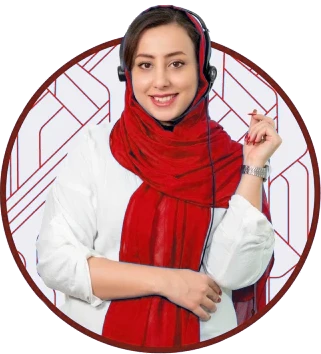ALEXANDRITE 755 nm
1- چون در همه انواع پوستها چه روشن چه تیره چه برنزه (سولاریوم یا افتاب گرفته) میتواند بطور دائمی موهای زائد را حذف کند. 2- بیخطرترین، ایمنترین دستگاه میباشد چون هیچ نوع عارضه ای برای شخص ایجاد نمیکند. 3- کمترین تعداد جلسات لیزر(کوتاه ترین مدت درمان) را برای از بین بردن موهای زائد نیاز دارد پس از نظر هزینه و وقت درمان بیمار، مقرون به صرفه ترین دستگاه میباشد.
اطلاعات تامین کننده
توضیحات محصول
1- چون در همه انواع پوستها چه روشن چه تیره چه برنزه (سولاریوم یا افتاب گرفته) میتواند بطور دائمی موهای زائد را حذف کند.
2- بیخطرترین، ایمنترین دستگاه میباشد چون هیچ نوع عارضه ای برای شخص ایجاد نمیکند.
3- کمترین تعداد جلسات لیزر(کوتاه ترین مدت درمان) را برای از بین بردن موهای زائد نیاز دارد پس از نظر هزینه و وقت درمان بیمار، مقرون به صرفه ترین دستگاه میباشد.
4- مورد تائید FDA (سازمان غذا و داروی آمریکا) میباشد و جدیدترین مدل دستگاه الکساندرایت آپوجی ساخت کمپانی (Cynosure) کشور آمریکا میباشد و هیچ مشابه و رقیبی ندارد.
طبق آمار موجود، 73 % خانمها از روش اپیلاسیون برای مو زدایی استفاده می کنند، 15 % از سایر روش ها (Shave و موبرهای شیمیایی و...) و تنها 12 % از افراد از روش لیزر و IPL جهت از بین بردن موهای زائد استفاده می کنند
این سؤال در اینجا مطرح می شود که آیا شما از عوارض اپیلاسیون اطلاع دارید یا خیر؟؟؟
اپیلاسیون روشی قدیمی جهت از بین بردن موهای زائد است که دائمی هم نمی باشد و بدلیل موقتی بودن آن تکراری و خسته کننده است و دارای عوارض بسیاری می باشد
1. شلی پوست (مانند شلی پوست زیربغل)
2. جوش های چرکی و قرمز
3. شیوع زگیل های پوستی در ناحیه تناسلی که علت عمده آن استفاده از وسایل غیر استریل در مراکز غیر رسمی می باشد.
What is a laser?
LASERs (light amplification by stimulated emission of radiation) are sources of high-intensity monochromatic (single wave length) coherent light that can be used for the treatment of various dermatologic conditions depending on the wavelength, pulse characteristics, and fluence (energy output) of the laser being used and the nature of the condition being treated.
Various kinds of lasers are available; they are differentiated by the medium that produces the laser beam. Each of the different types of lasers has a specific range of utility, depending on its wavelength and penetration.
What is a pulsed dye laser?ms.
How does the pulsed dye laser work?
The pulsed dye laser, when used for dermatological applications, works on the principle of selective thermolysis.
The selected wavelength of laser light is absorbed to a high degree by the target structure (called chromophores) compared to surrounding tissue.
The pulse duration of laser energy is shorter than the target structure’s thermal relaxation time, which is the time taken for the target to cool by 50% of its peak temperature after irradiation.
This ensures that the impact of thermal energy is limited to the target structure and does not affect the surrounding tissue.
When pulsed dye laser light hits the skin, it is reflected, transmitted, or absorbed.
Absorbed energy is most responsible for the clinical effect because it is converted to thermal energy (heat) by the intended targets (chromophores), thereby killing the diseased cells.
The skin chromophores commonly targeted by the pulsed dye laser is haemoglobin in blood.
Complications result when energy intended for the target chromophore is nonselectively diffused and absorbed by surrounding tissues and structures.
What is a pulsed dye laser used for? The physician should apply laser pulses in a nonoverlapping manner to prevent excessive thermal damage (burns) that could result in blistering and scarring.
Port-wine stains treated with the pulse dye laser and a cryogen-cooling device have been shown to have a significantly better response at 585 nm than at 595 nm.
In general, port-wine stains fade by 80% after 8–10 treatments. Lesions on the face or neck tend to respond more quickly than those on the lower extremities.
For the treatment of port-wine stains, hemangiomas, and facial telangiectasias, the 585 nm pulse dye laser has the best clinical track record for both effectiveness and safety, regardless of patient skin phototype.
Non-vascular skin conditions
PDL is also widely used to treat several nonvascular conditions including plane warts, angiofibroma (tuberous sclerosis) and pyogenic granulomas.
PDL has been shown to be beneficial for these conditions in fair-skinned (Fitzpatrick skin types I–III) individuals.
The procedure is repeated at intervals of 4-6 weeks up to an average of 3 sessions.
The laser parameters used are:
Plane warts: spot size 5 mm, fluence 5.5–7.5 J/cm2, wavelength 585 nm, pulse duration 0.45 ms (single pulse per lesion)
Angiofibroma: spot size 5 mm, fluence 6–8.5 J/cm2, wavelength 585 nm, pulse duration 0.45 ms (2 pulses per lesion)
Pyogenic granuloma: spot size 5 mm, fluence 7 J/cm2, wavelength 585 and 595 nm alternately, pulse duration 1.5 ms (4–5 pulses per lesion). Changes in skin pigmentation. Sometimes the pigment cells (melanocytes) can be damaged leaving darker (hyperpigmentation) or paler (hypopigmentation) patches of skin. Generally, cosmetic lasers will work better on people with lighter than darker skin tones. ON: Canadian Agency for Drugs and Technologies in Health (CADTH); 2007.
Liu A, Moy RL, Ross EV, et al. Pulsed dye laser and pulsed dye laser-mediated photodynamic therapy in the treatment of dermatologic disorders. Dermatol Surg. 2012; 38(3):351–366.
Tan SR and Tope WD. Pulsed dye laser treatment of rosacea improves erythema, symptomatology, and quality of life. Journal of the American Academy of Dermatology. 2004 Oct; 51(4):592–9.
Komericki P, Akkilic M, Kopera D. Pulsed dye laser treatment of genital warts. Lasers Surg Med. 2006; 38(4):273–276.
Pooja Arora, Rashmi Sarkar, Vijay K Garg, and Latika Arya Lasers for Treatment of Melasma and Post-Inflammatory Hyperpigmentation. J Cutan Aesthet Surg. 2012 Apr-Jun; 5(2): 93–103.
Donelan MB, Parrett BM, Sheridan RL. Pulsed dye laser therapy and z-plasty for facial burn scars: the alternative to excision. Ann Plast Surg. 2008 May; 60(5):480–6.
Treewittayapoom C, Singvahanont P, Chanprapaph K, Haneke E .The effect of different pulse durations in the treatment of nail psoriasis with 595-nm pulsed dye laser: a randomized, double-blind, intrapatient left-to-right study. J Am Acad Dermatol. 2012 May;66(5):807–12
Laser hair removal: long-term results with a 755 nm alexandrite laser.
Eremia S1, Li CY, Umar SH, Newman N.
Author information
Abstract
BACKGROUND:
Hypertrichosis is a common problem for which laser hair removal is becoming the treatment of choice. Optimal wavelength, pulse duration, spot size, fluence, and skin cooling parameters for various skin types have not yet been firmly established.
OBJECTIVE:
To evaluate the long-term efficacy and safety of a 3-msec 755 nm alexandrite laser equipped with a cryogen cooling device for patients with Fitzpatrick skin types I-V.




